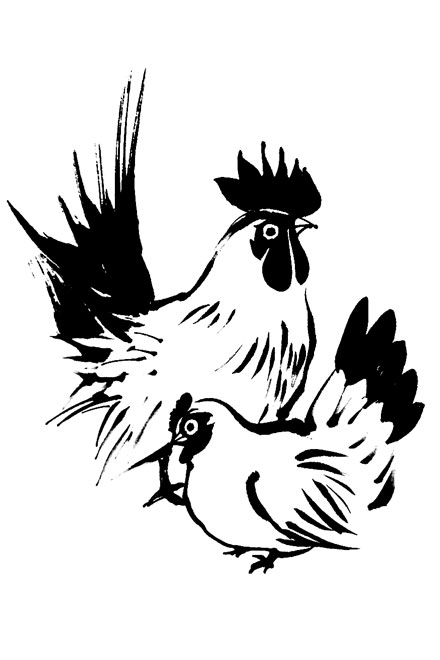By Dana S. Mar
The North American Post
In accordance with the Chinese zodiac, the year of 2017 is the Year of the Rooster. As with every other zodiac animal, the Rooster’s year comes every twelve years, marking the next to be 2029 and the previous year as 2005.
Those born in 2017 and every twelve years preceding and henceforth are referred to as “Roosters” or simply “tori” (bird) in Japanese, though the presiding animal is said to encompass all domestic farm-type birds. In addition to the zodiac animal are one of five elements: wood, fire, earth, gold (or metal) and water, which further determine one’s personality. This lunar New Year on Jan. 28, although Japan recognizes Jan. 1 as the New Year, heralds the year of the fire Rooster. Since the elements occur in cycles as well the next Year of the Fire Rooster will be in 60 years.
Fire Roosters are particularly responsible and trustworthy on top of the typical Rooster characteristics of being observant, hardworking, courageous and confident. Roosters are, as people and as animals, known to be socially talented, honest and active but often perceived as braggarts, vain or too sensitive.
Although many variations of the Chinese zodiac’s origin story exist, the most commonly known story appears to be that of the Heavenly (Jade) Emperor or Buddha holding a competitive race for the animals to earn their place on the calendar or in Heaven beside the Emperor.
Most variants of this story seem to agree that the Sheep, Monkey and Rooster worked together to make it across a great river on a raft. The compassion and kindness of the Sheep (Ram or Goat) brought the Monkey and Rooster to allow it across the finish line in eighth. The Monkey’s cleverness earned it the ninth place. As a result of its loyalty and pride, the Rooster took 10th place.
In Asakusa, Japan, a market fair called Tori no Ichi is held yearly on the Days of the Rooster (in November) at Juzaisan Chokoku-ji (Temple of the Rooster), where open-air stalls are set up to sell various foods and kumade rakes, which supposedly symbolize the feet of a bird. Originally the Harvest Festival of Hanamata Washidaimyojin, this event would gather people under the local deity’s protection who would dedicate and release a rooster in front of Senso-ji, less than a mile south of the current-day Temple of the Rooster. Many roosters can be found wandering about Ise Grand Shrine, which is dedicated to the sun goddess Amaterasu, and are thought to wake her with their morning calls. It is reminiscent of the story of Amaterasu being tricked to come out of hiding in a cave by the calls of roosters gathered by other gods.
The Year of the Rooster is most unlucky for all born under the Rooster’s years, regardless of the year’s element. Thus, to circumvent further misfortune, avoid the color red; numbers 1, 3 and 9; the direction East and the 3rd, 9th and 12th Chinese lunar months. A Rooster’s lucky numbers are 5, 7 and 8; lucky colors include gold, brown and yellow; lucky directions are South and South East; lucky months are the 2nd, 5th and 11th lunar months and lucky flowers are gladiola and, unsurprisingly, cockscomb.
Those belonging to years of the Ox and Snake are most compatible with Roosters. Roosters are comfortable in social situations and can often be quite charming, however they can be attention-seekers and may become agitated when ignored. Rats, Rabbits, Horses, Dogs and especially other Roosters can find it very difficult to get along.
Perhaps the zodiac signs are not always accurate, but it is still a good idea to be cautious of social troubles and continue working hard towards a successful 2017. Enjoy the New Year and remember to take time for breaks and destressing.







